Egypt In The Ancient World
Egypt gradually stopped constructing these massive structures, with high production costs and a decentralized state being commonly cited by scholars as reasons why they stopped building pyramids. Another theory was that pyramids attracted burglars. Despite this, ancient Egypt’s power and standing in the world lasted for over a thousand years after they stopped building the pyramids. For these later dynasties, the pyramids were ancient symbols of their history, culture, and religion that were to be preserved.
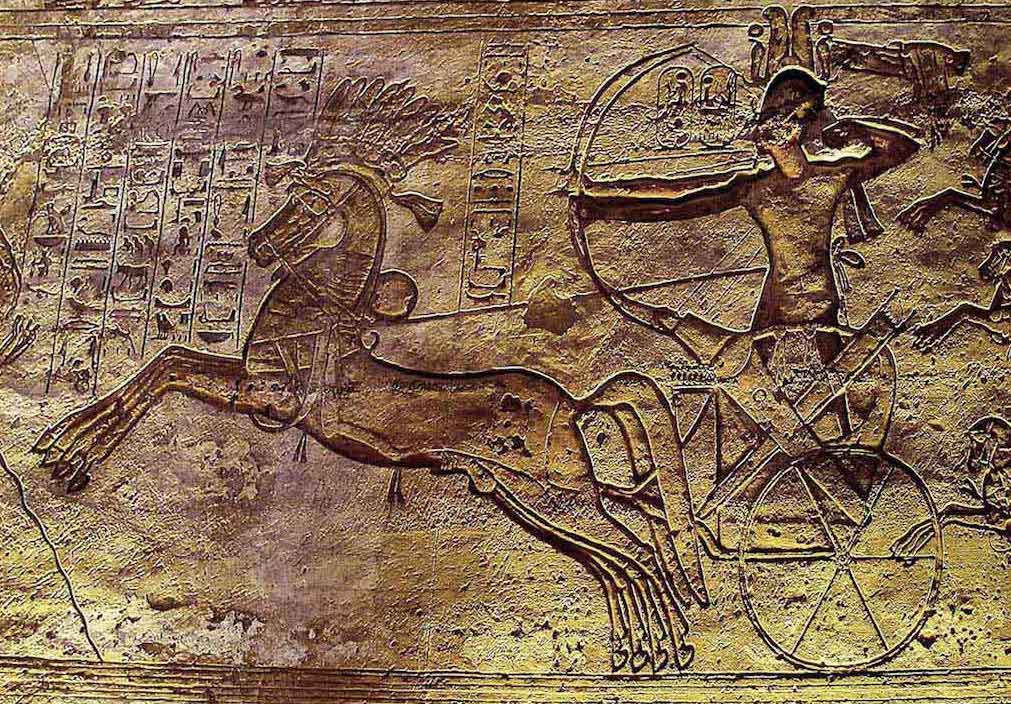
Where Are The Great Pyramids?
Egypt has a great many attractions that are associated with the ancient Egyptians besides the pyramids. These include the Valley of Kings in Luxor, the Abu Simbel Temple in the south, and many more. However, the significantly larger Giza complex predates these by over a thousand years. A trip to Cairo, the capital city of modern-day Egypt, brings you within reach of the magnificent complex, which includes three massive pyramids, the Great Sphynx, and a number of smaller monuments and burial sites.
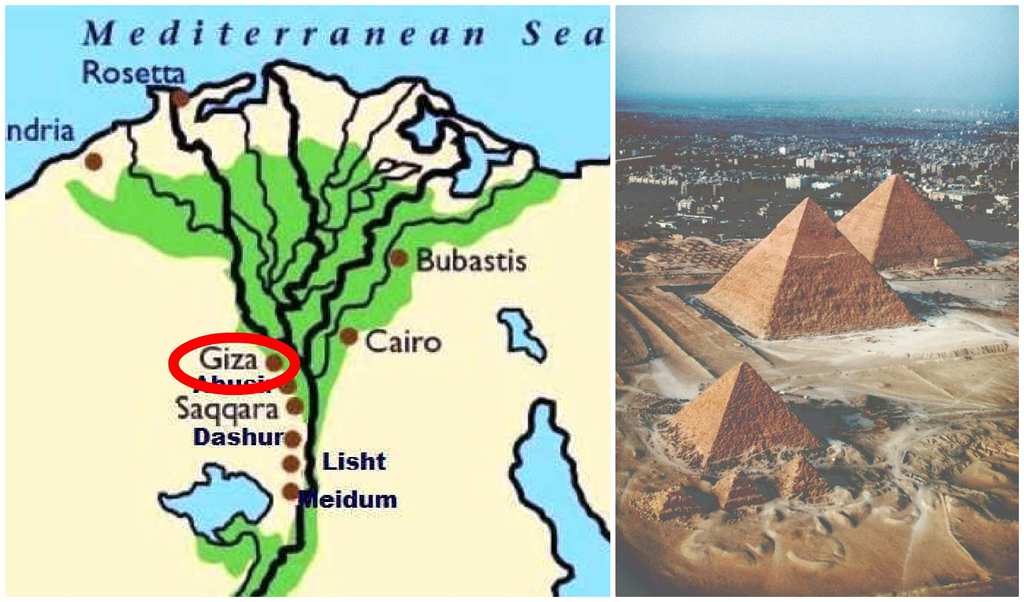
The Pyramids
Pyramids are actually a relatively common structure to house the deceased, appearing in numerous cultures around the world that have had no contact with each other. The Egyptian pyramids are unique and noteworthy because of their age, monumental size, and the fact that they still stand today. The technological skills needed to build such precise and massive structures just don’t seem to belong to an ancient society. The first pyramids in Egypt began showing up over 4,000 years ago, during the 27th century B.C. (the Third Dynasty) and continued for the next thousand years.

Tombs Of The Pharaohs
Almost all of the pyramids appear on the west bank of the Nile, as the sun setting in the west was associated with the afterlife for the ancient Egyptians. That being said, hardly all of the pharaohs are housed in pyramids and the practice largely ended during the New Kingdom period, beginning with the 18th Dynasty. Pyramid construction reached its peak in the Fourth Dynasty, shortly after the tradition began. It was during this era that the pyramids at Giza were constructed.

Pyramids At Giza
The most impressive pyramid complex is at Giza, which houses the tombs of three pharaohs. Beginning with the far left in the image below, we can see the first and largest, built by Khufu, followd by a slightly smaller one built by his son, Khafre, and a significantly smaller one built by his grandson, Menkaure. The Khufu pyramid is made of over two million stone blocks, stretching for a length of 755 feet, and rising to an impressive 455 feet even after four millennia of erosion. Its height was only surpassed in the 14th century A.D.
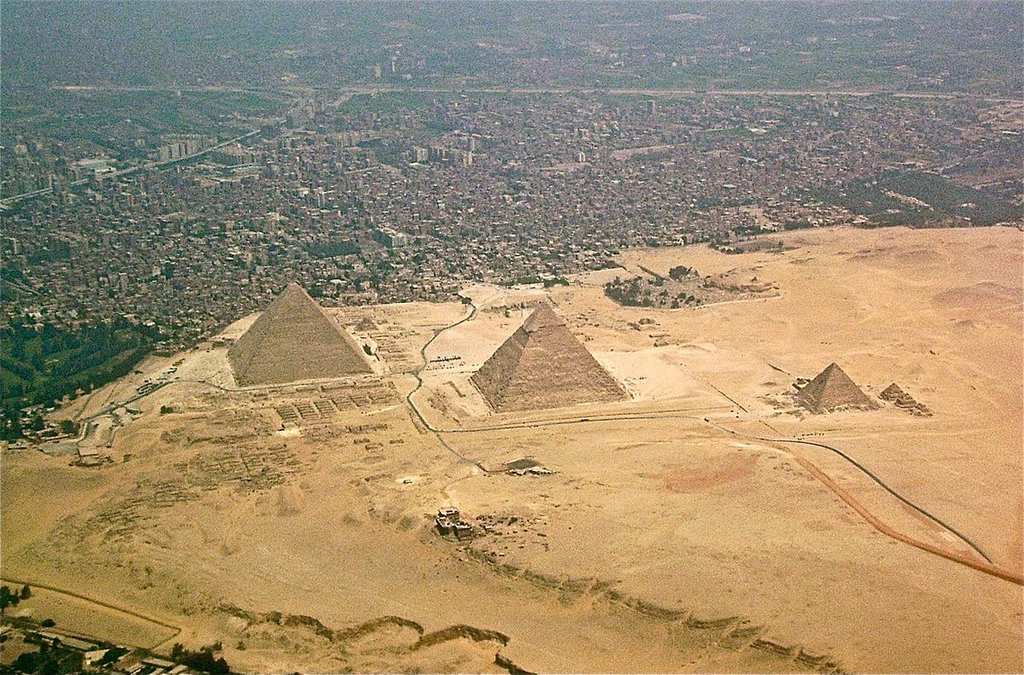
King Khufu’s World Wonder
Other cultures that saw the pyramids were awestruck. The ancient Greeks were so impressed that they named Khufu’s Great Pyramid, the largest built, as one of the seven wonders of the world. Despite being the oldest of the seven, it is the only one still standing today. Even the Greeks marveled at how these structures were built, with the great 5th-century Greek historian Herodotus theorizing in his Histories that it was built from the top down using a special machine. Does that sound possible to you?
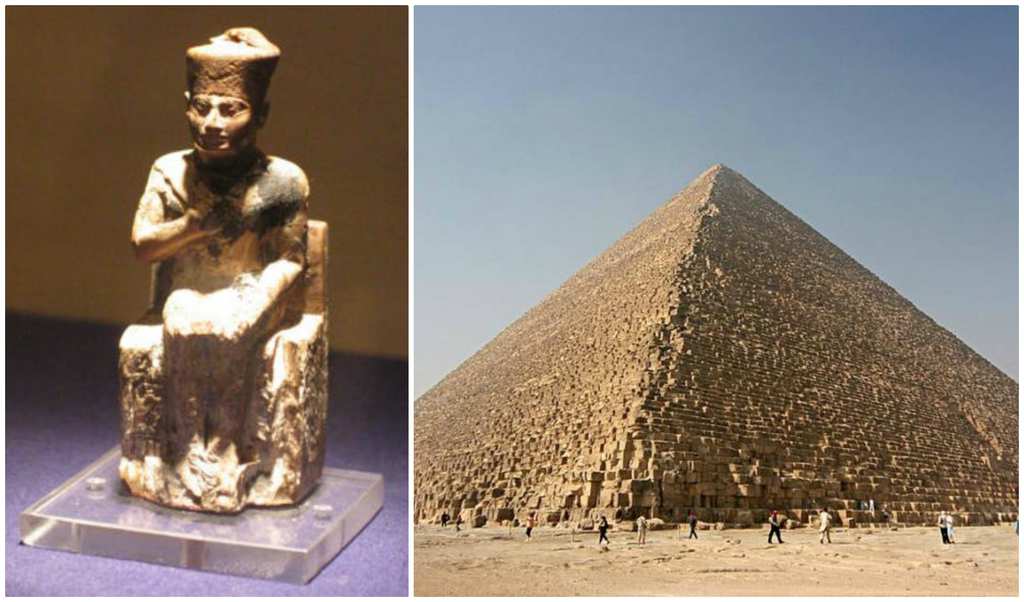
Demolition Attempt
Although the great pyramids capture the imagination of each successive generation, not everyone has seen them in a positive light. One sultan of Egypt, al-Malik al-Aziz Uthman, attempted to destroy the pyramids at the end of the 12th century. He viewed them as monuments to pagan gods that encourage idol worship, which went against his Islamic faith. He decided to destroy them, but only got as far as the gaping hole that is pictured below before he gave up. It was simply too much of an effort to disassemble those massive boulders.
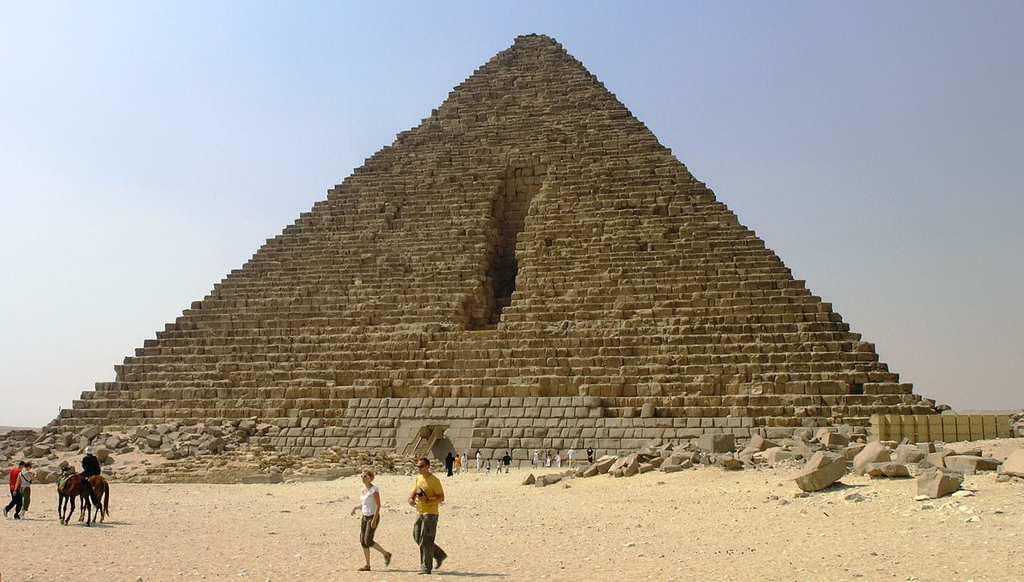
Timeless Feats Of Architecture
Regardless of your religious convictions, the pyramids are a marvel to behold, especially those at Giza. Other pyramids have waited in the sands, crumbling over time due to faulty construction, but those at Giza represent a peak of early architectural prowess that we don’t fully understand. If you’re not so impressed, think about it this way: after the Khufu Pyramid, it took mankind another 3,800 years to construct a taller structure, despite the development of advanced mathematics and building techniques. Indeed, it has remained the tallest man-made structure for most of written history.
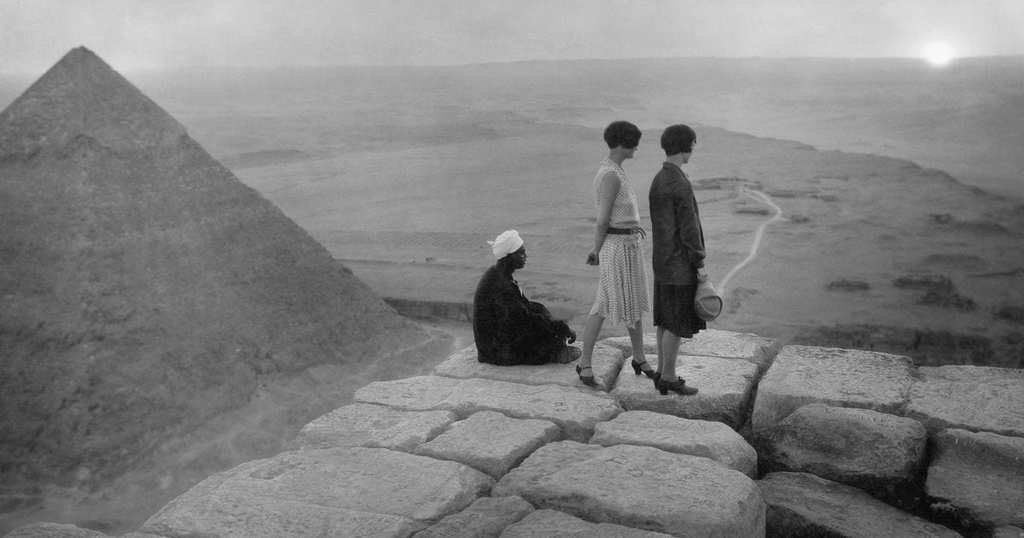
Technology Of The Time
When the great pyramids were built, the ancient Egyptians were among the most advanced people in the world. They had evolved far beyond a simple Stone Age civilization and had mastered bronze making. Still, that doesn’t explain how they built such an impressive structure whose height wouldn’t be surpassed for almost four millennia. There is no recorded use of the wheel in Egypt for transportation at the time, yet the stones arrived from far-away quarries. In addition, the Giza pyramids were meticulously placed, angled to sit precisely on north-south and east-west axes.
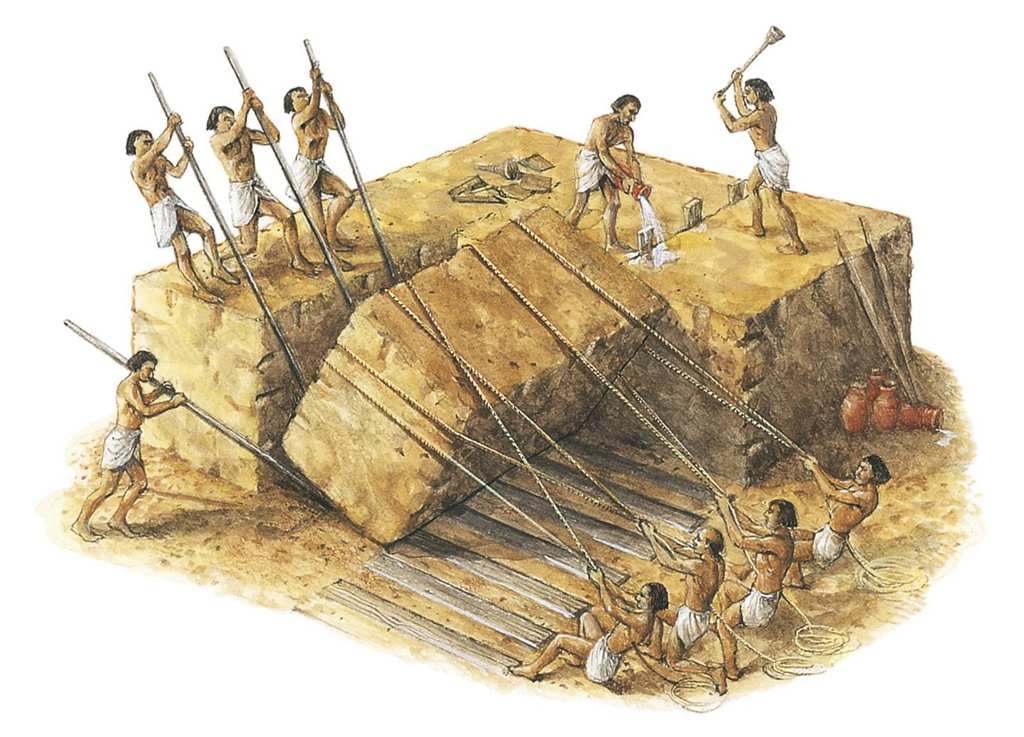
Wild Theories
Some theories on how such an ancient people with primitive tools and technology were able to construct such a marvel, even by today’s standards, just sound crazy. Theories involving divine intervention and aliens aside, one of the most far-fetched ones has the Egyptians moving the massive blocks with their minds. Others say the pyramids began as hills before people carved the four-sided monuments from the top to the bottom. These theories aren’t seriously considered by most scholars, however, who rely on the little factual evidence that we do have…
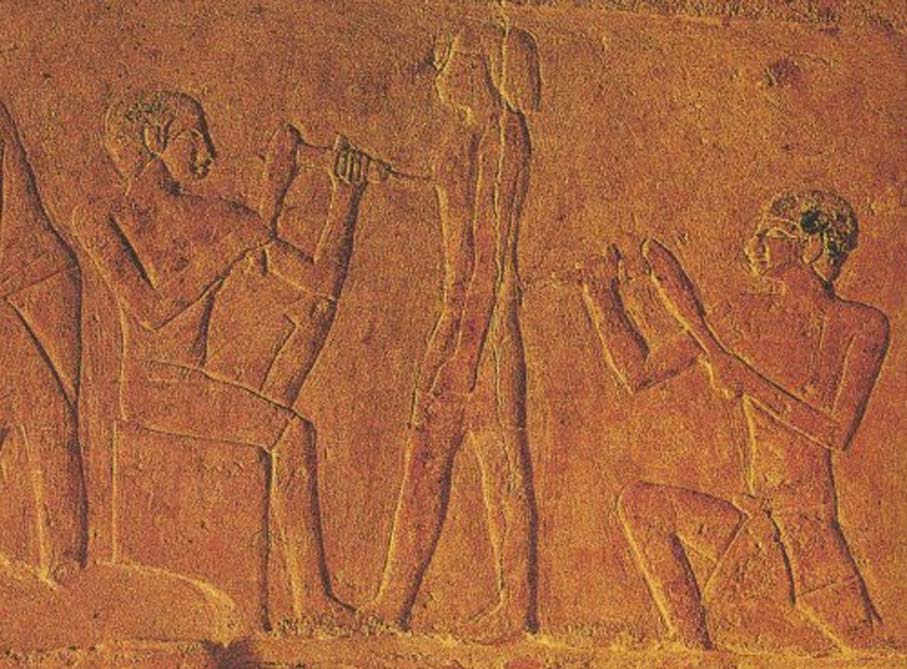
Merer’s Diary
While there is no manual describing the method used to construct the pyramids, there is a record that provides some information. Written by an official named Merer over 4,500 years ago, the scrolls were found in 2013. Merer was in charge of transporting limestone from Tora, considered the finest, to Giza, which had inferior limestone. This superior limestone was used to encase the pyramids in a spectacular white that reflected the sun’s rays and dazzled onlookers, like in this artistic interpretation.

The Answer We’ve Been Seeking?
The Great Pyramid at Giza was the tallest manmade structure in the world for most of human history. In spite of the ancient Egyptians’ primitive technology, their skillful execution of this project has baffled humanity for generations. As the builders left little record of their methods, many theories have been offered over the years to explain the mystery of how they were constructed, some more credible than others. A new discovery, however, may end the mystery once and for all…
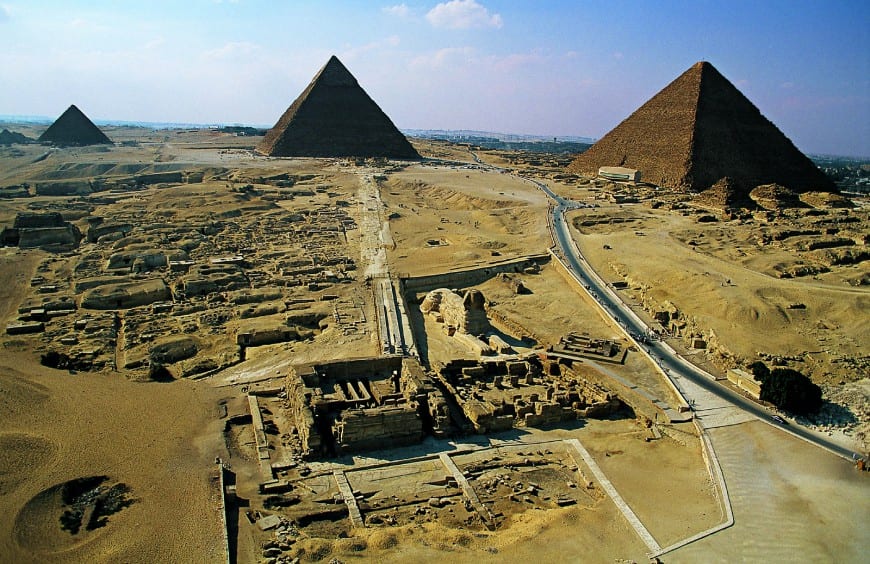
A Significant Find
Why is this important? For one, this is actually the oldest papyrus scroll ever discovered. Secondly, the scroll was written by a subject ofKing Khufu who was responsible for transporting limestone to Giza. In it, he describes the routines of those same workers who contributed to the pyramid’s construction. Some 40 boatsmen worked under Merer and would put the stones on boats to transport the slabs downstream, to Giza. Two or three round trips were made every 10 days, but this still doesn’t explain how the stones were moved on land.
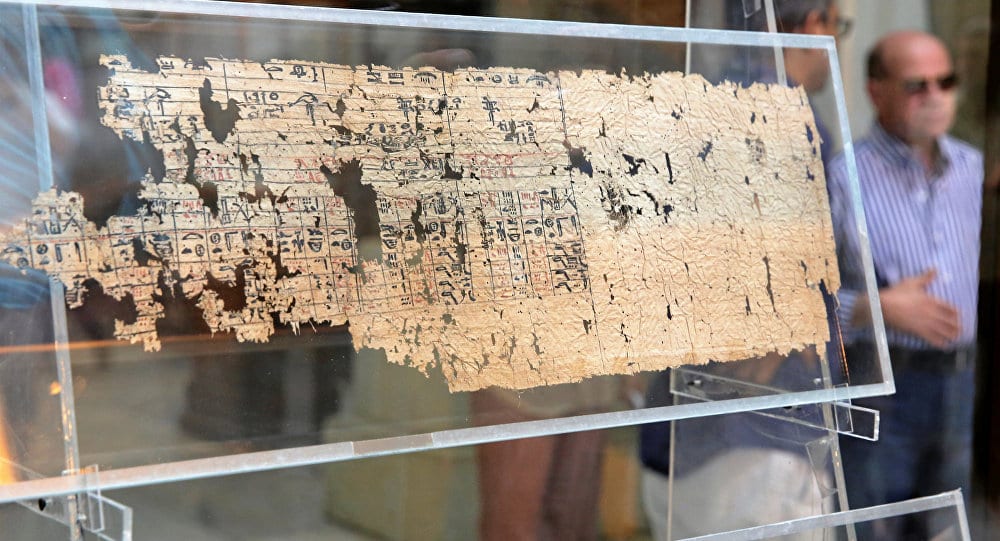
General Consensus
So despite the lack of abundant evidence, the little there is has led to some consensus among scholars on how the pyramids were built. For example, here is a sketched copy of a relief from Pharaoh Djehutihotep’s tomb, discovered in the late 19th century but unfortunately damaged shortly after. It shows a colossus statue of the pharaoh being dragged by workers, with one Egyptian pouring water in front of a sled dragging the statue along the sand. Generations of Egyptologists believe this was ritualistic in nature, but a 2014 study strongly suggests it was a construction method…
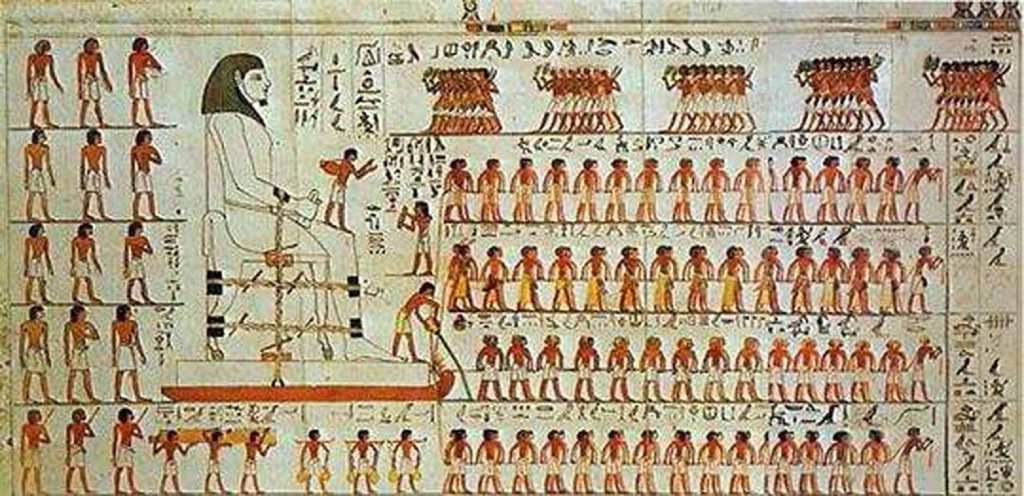
2014 Scientific Findings
The study found that wet sand could halve the amount of force needed to drag a heavy object. “In the presence of the correct quantity of water,” the scientists wrote, “wet desert sand is about twice as stiff as dry sand. A sled glides far more easily over firm desert sand simply because the sand does not pile up in front of the sled as it does in the case of dry sand.” This may help explain how they moved the boulders from quarries miles away, but how did they raise them so high?
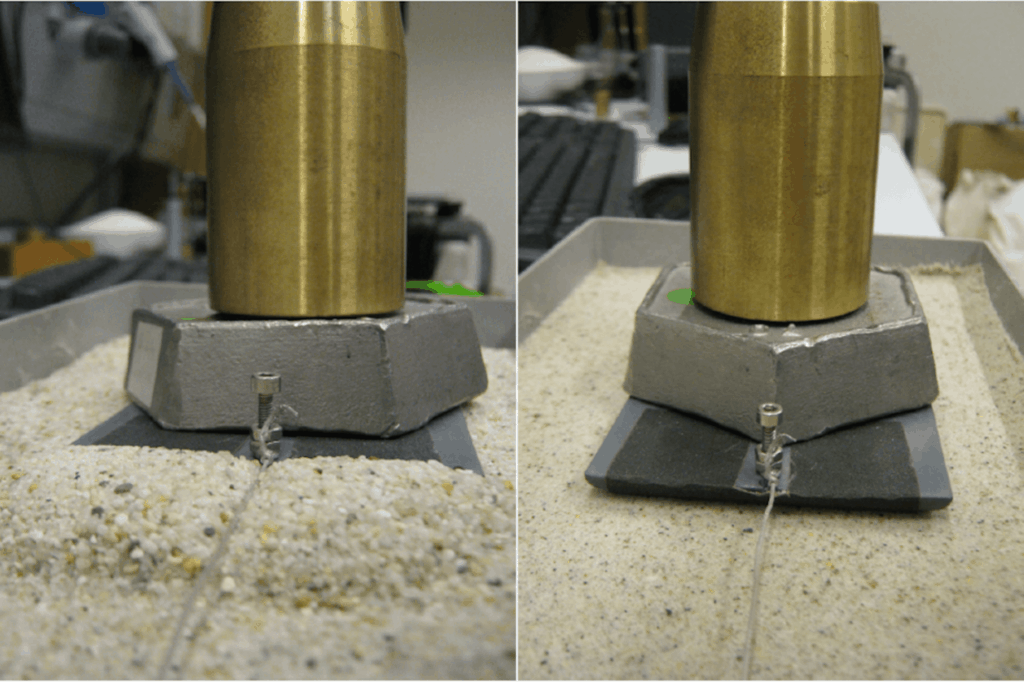
Alabaster Quarry Site At Hatnub
The answer may have been found by a joint expedition done by the French Institute for Oriental Archaeology in Cairo and the University of Liverpool in England. The group visited the alabaster quarries of Hatnub, in Egypt’s Eastern Desert between the Nile and the Red Sea. Past excavations there have unearthed rare evidence that sheds light on the ancient Egyptians’ way of life, and the current one finally hints at how the Egyptians were able to raise massive stone blocks to such towering heights…
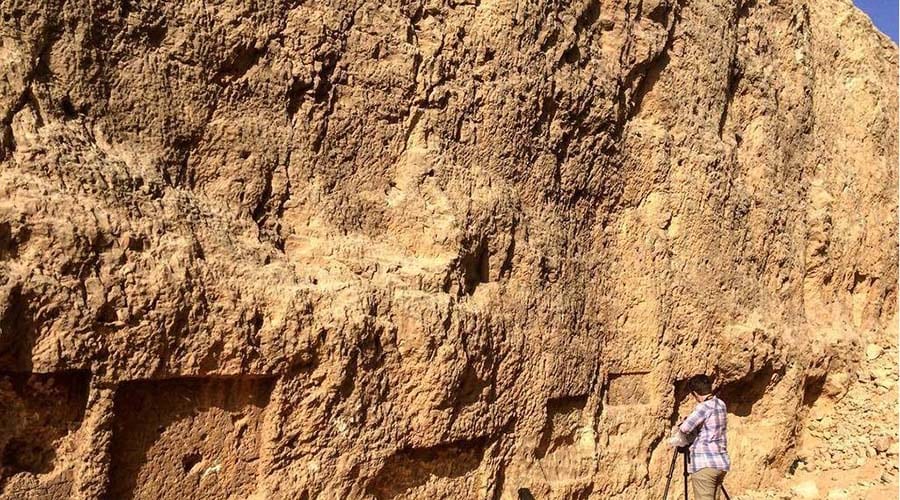
The Find
Researchers discovered an ancient ramp system that the French Institute’s Yannis Gourdon, one of the heads of the current excavation in Hatnub, says “has never been discovered anywhere else. The study of the tool marks and the presence of two [of] Khufu’s inscriptions led us to the conclusion that this system dates back at least to Khufu’s reign, the builder of the Great Pyramid in Giza.” Fascinating, but does this system help us answer how the Egyptians raised these massive stone slabs over 450 feet high?
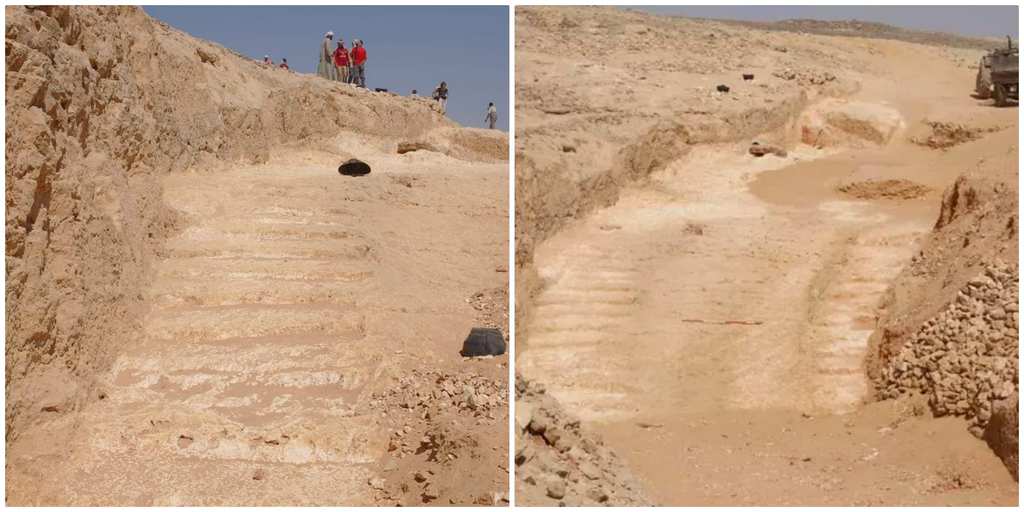
Ancient Building Secret
“This system is composed of a central ramp flanked by two staircases with numerous post holes,” Gourdon explained. “Using a sled which carried a stone block and was attached with ropes to these wooden posts, ancient Egyptians were able to pull up the alabaster blocks out of the quarry on very steep slopes of 20 percent or more.” According to Liverpool’s Roland Enmarch, another leading researcher for the project, the ropes acted as a “force multiplier.” They believe this was the same technique used to raise the blocks up to the top of the pyramids.

Inscriptions Found
The archaeologists also reportedly found at least 100 inscriptions at the site that commemorate visits by pharaohs to the quarry. “The restoration team is working on the preservation of the inscriptions,” Roland Enmarch said, “as well as the epigraphic survey of the residential structures around the quarries made of different stone blocks used for the quarries workers. The team unearthed four stone steles. One of the steles shows a drawing of a standing person and the other three have unclear hieratic inscriptions due to the bad state of preservation and in need of restoration and preservation.”
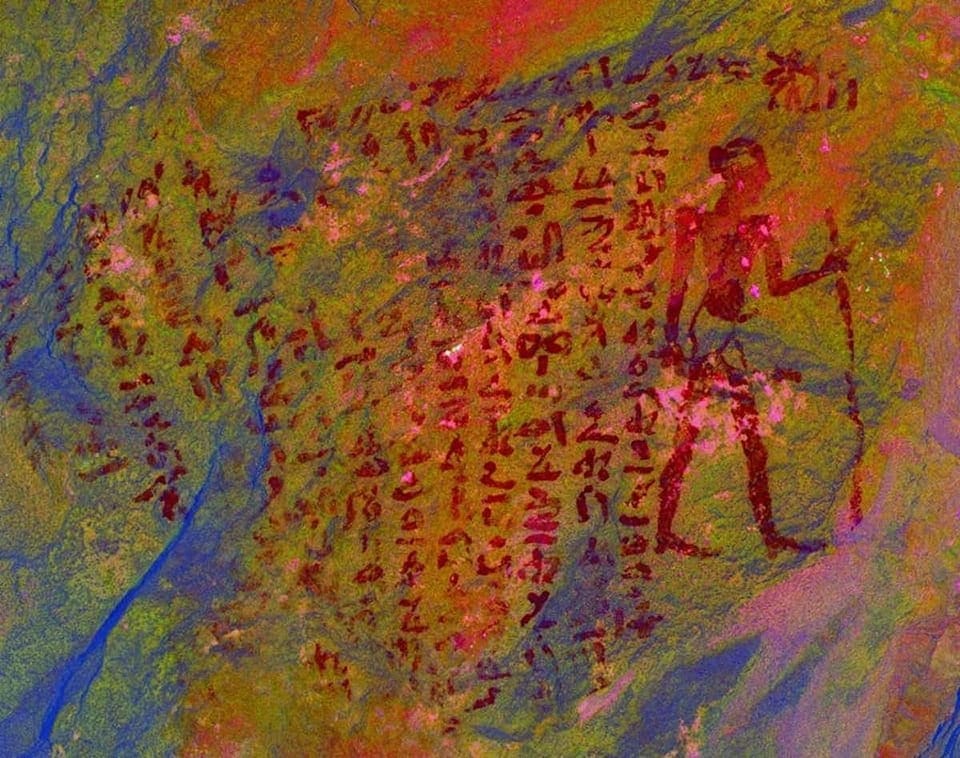
Does This Answer The Question?
Not everyone is convinced that this truly reveals anything about the pyramids. Professor Kara Cooney, who isn’t involved in the project, specializes in Egyptian art and architecture at the University of California, Los Angeles. According to her, the significance of the discovery cannot be known until the research is published. In addition, she points out that “it’s a stretch to take an alabaster quarry and say this is how the pyramids were built because the pyramids weren’t built out of alabaster.”

The Mystery Remains
While alabaster was used to decorate certain areas of the pyramids, including the floors, it is a relatively soft mineral that wasn’t used for the exterior of Khufu’s Pyramid. For that, the Egyptians cut limestone that came all the way from Tura, as is described in the Merer Diary. Even though the empirical evidence reveals certain parts of the operation, Dr. Kara Cooney concludes that “the way that the ancient Egyptians cut and moved stone is still very mysterious.”
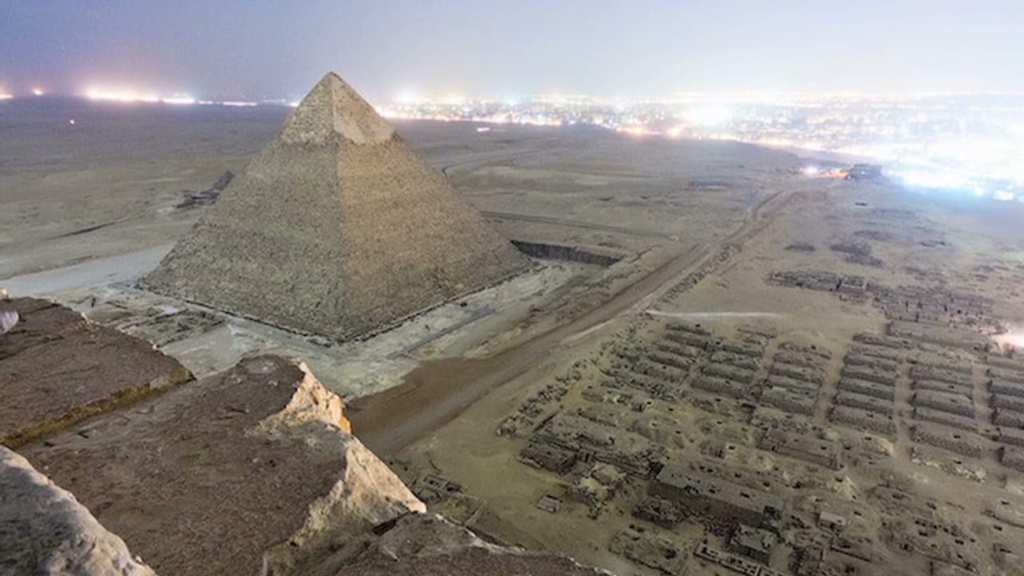
How Did They Cut The Stones?
According to Kara Cooney, “We actually don’t know [their] mechanism of cutting hard stones like red granite,” which remains one of their greater mysteries. These stones are significantly harder than the bronze tools they had to work with at the time, and yet the Egyptians apparently did so seamlessly as part of their pyramid-building operation. Conney adds that “we still don’t know how the ancient Egyptians lifted blocks weighing hundreds of tons up the sides of the pyramids.” So what do we know for sure?
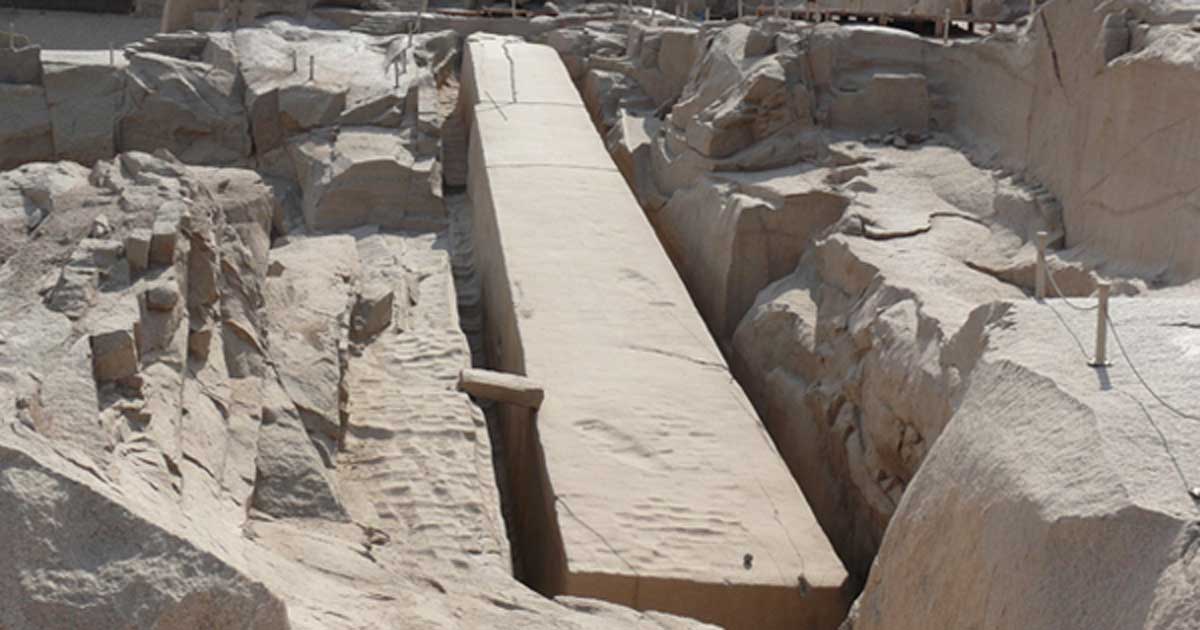
A Wonder
Although it’s widely agreed upon that lifting the stones required ramps, how they were used is disputed. The alabaster quarry ramp adds to our knowledge but cannot dispell the mystery of how the pyramids were actually built, just as King Khufu likely intended. “Any authoritarian regime is going to hide their secrets as long and as best as they can,” said Dr. Kara Cooney. “The pyramids are there as mountains of stone proving the otherworldly nature of their god-kings. You stand in front of those pyramids and you feel it’s impossible to build such a thing.”
